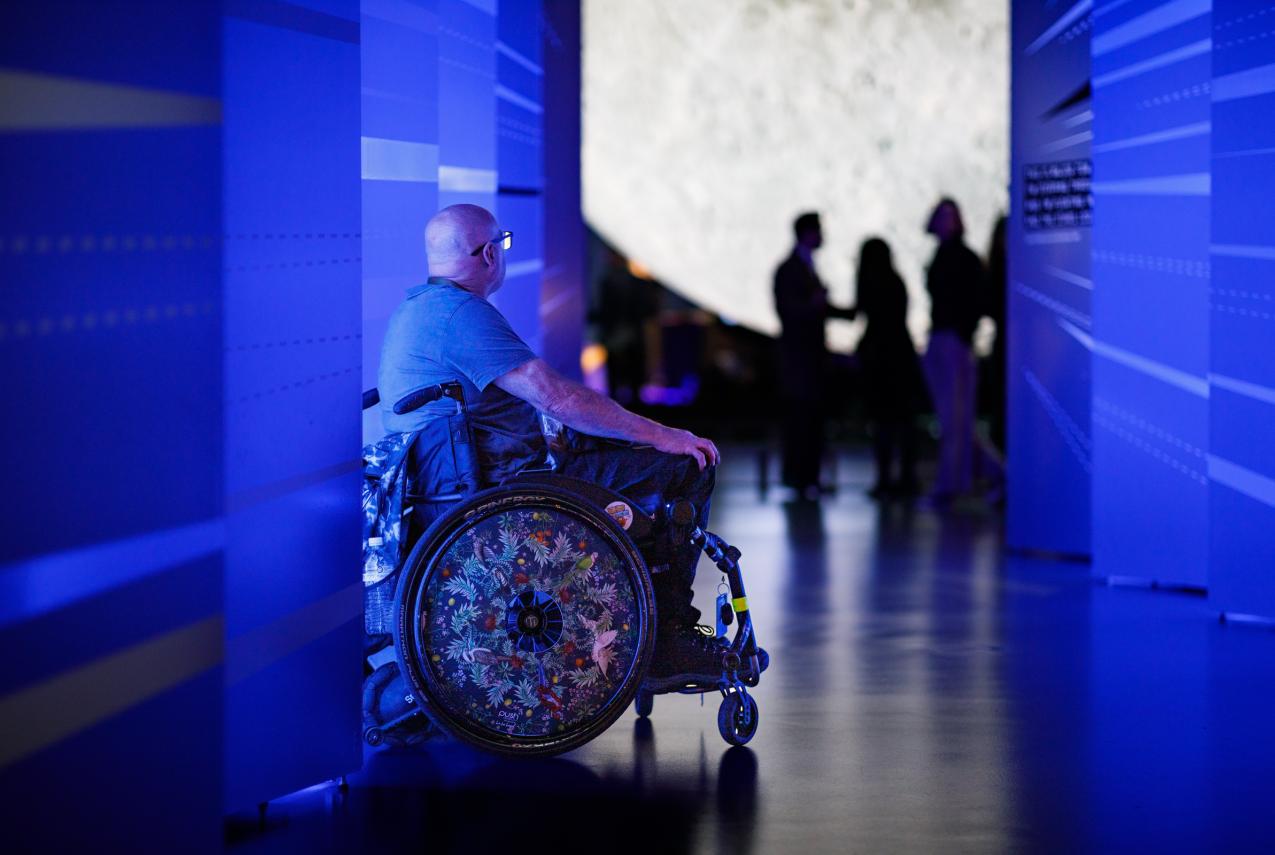Before we begin...
For your adventure to the Moon, we recommend familiarising yourself with (the) space before liftoff. Please see a Visual Story and Sensory Map for your exploration.
To the Moon Sensory Map - PDF [5.7 MB]
To the Moon Visual Story - PDF [8.9 MB]
A sky-high view — experience a fly-through of the entire experience, from Museum entry to exhibition exit.
Avoid the queues
To minimise the time you spend in a queue, we suggest you buy tickets online before you visit.
Visual Supports
Before your visit, print out the visual supports and checklist to help you develop a visual plan of your time at the Museum. This can help to structure a big day out, making it more enjoyable for everyone.
Visit Checklist – PDF [117.54 KB]
Visual Supports – Galleries – PDF [248.92 KB]
Visual Supports – Symbols – PDF [571.25 KB]
Ready for blast off?
Here is what you need to know from various disability perspectives, particularly focusing on cognitive, physical and sensory, to have the best experience possible.
Autistic Spectrum Disorder (ASD) and Neurodiversity
The exhibit is intellectually, visually, and emotionally stimulating. Please note that audio elements can be overwhelming due to background noise and minimal noise-cancelling options. To navigate this experience, we recommend grabbing a Sensory Backpack from our welcome desk and utilising the ear-defenders to tune out unwanted sounds.
In this exhibition, there is a lack of quiet spaces. Should you wish to experience the space in a more controlled sensory environment, there are Quiet Mornings and Evening sessions available.
Areas of note
The visual design of the major lit walkway is a highlight, with slow morphing effects that do not trigger vertigo. Loud noises (rocket and transmission sounds) can be overwhelming throughout the exhibition.
The interactive areas have very creative elements such as the poem creator, moon walk, and revolving Earth displays that can be enjoyed by all. However, the red lighting of the Lunar Lounge section can be overly stimulating. Interaction with some displays can be limited due to sensory overload.
Key takeaways: Interactive, interesting, lighting can be over stimulating, minimal quiet spaces, bring ear defenders to navigate audio experiences.
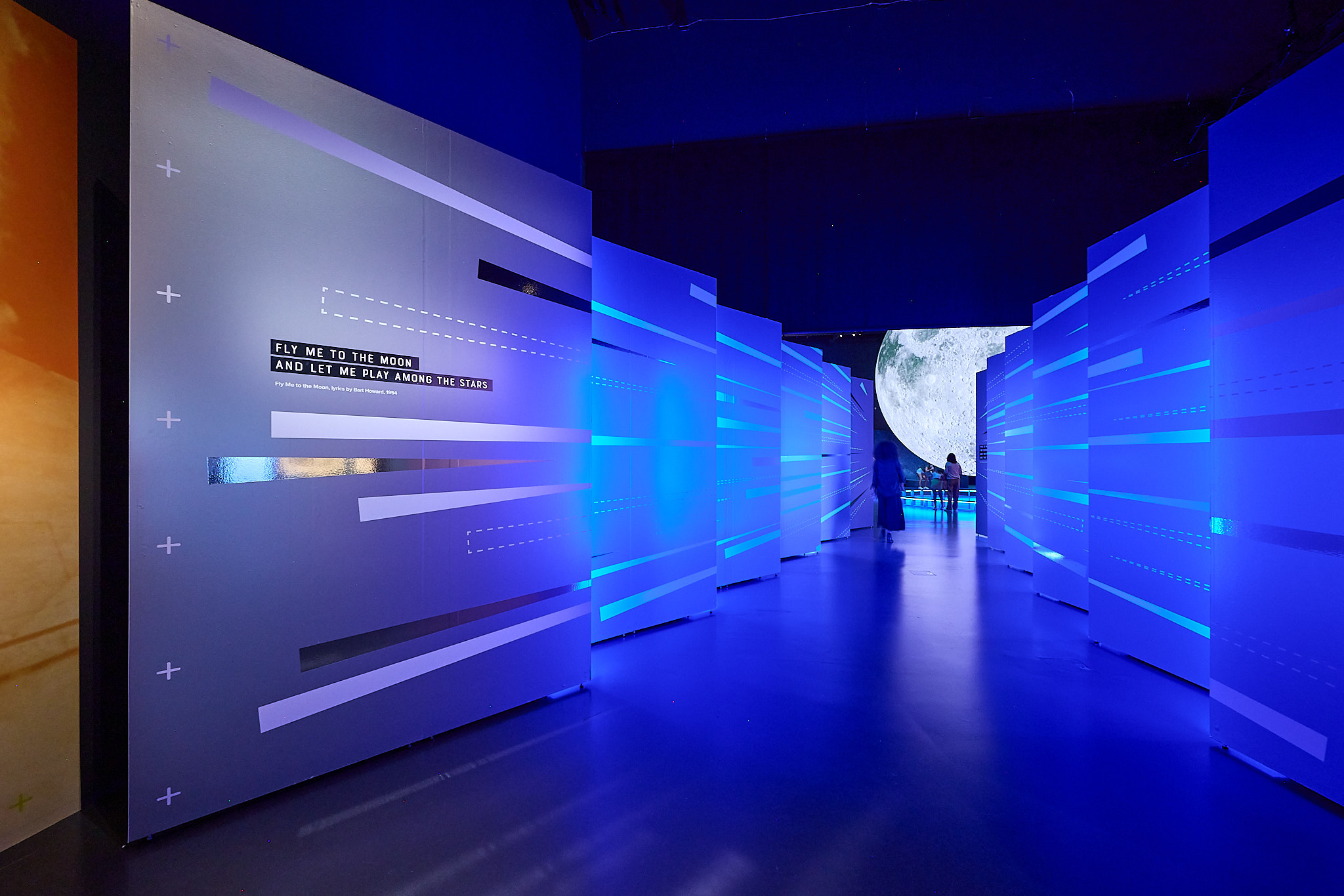
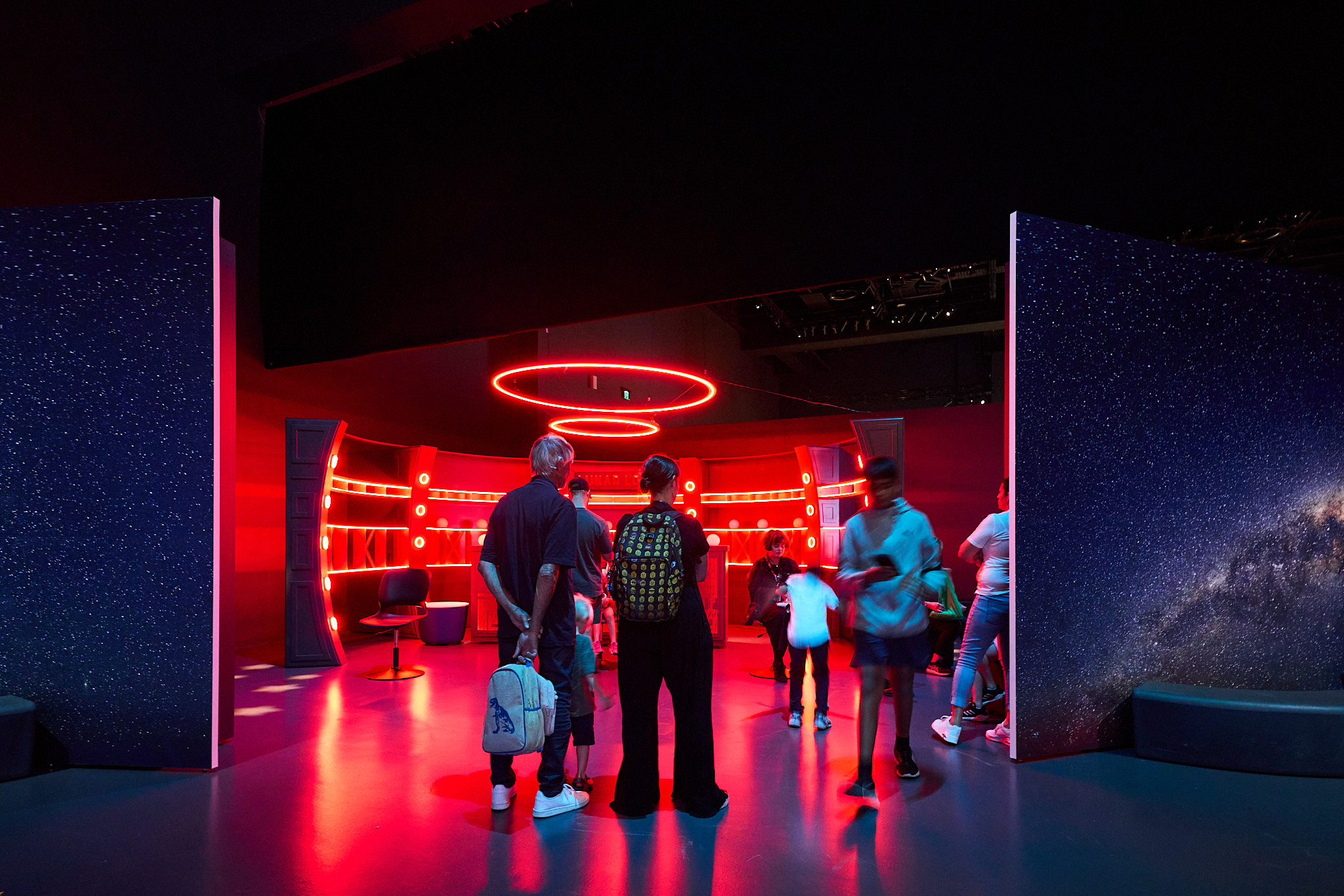
Sensory Barriers (Blind/Low Vision and Auditory)
Blind and Low Vision Disability
There is a significant amount of visually based content in the exhibition. Videos can be difficult to see, and no alternative texts are provided for some videos.
Dim lighting and some exhibition design elements reduce readability in the space. To navigate this experience, we recommend booking in for a Guided Tour to make the most of all the details within the experience.
Auditory Disability
The exhibition has many atmospheric noises consistently throughout the experience. The background noise can interfere with the clarity of some of the video and other audio content. Minimal subtitles are available to support this across video content. We recommend exploring Quiet Session availabilities and the Guided Tour to explore the details within the experience further, at your own pace.
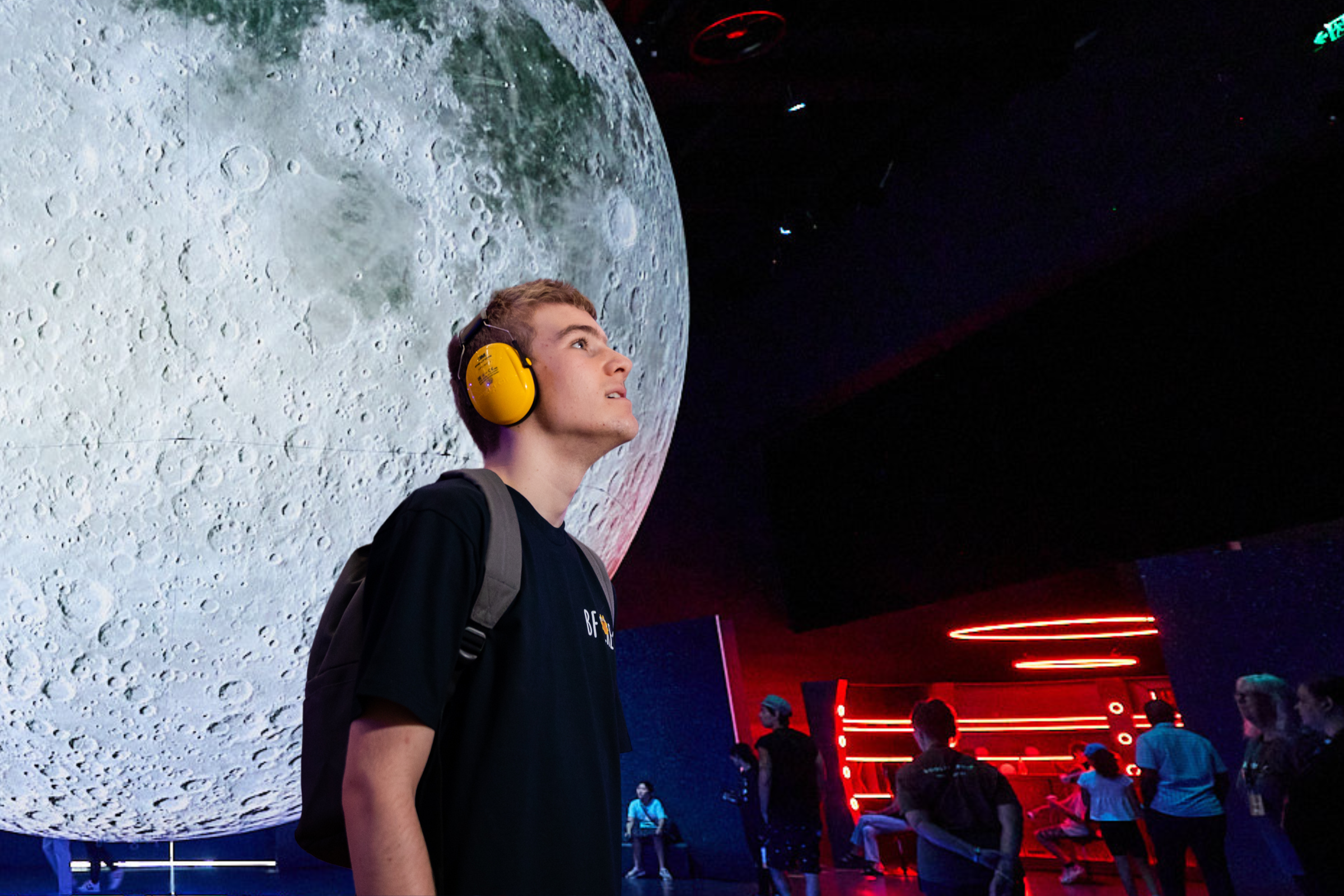
Physical Barriers (Mobility and Dexterity)
There are a variety of seating options throughout the experience. The seats by the multiscreen area are a good height and are firm enough to sit and stand from. Seating options in other areas, such as in our ‘The Eagle has Landed’ Lounge have hard-to-use chairs with no alternatives, due to being a replica of a 1960s lounge area.
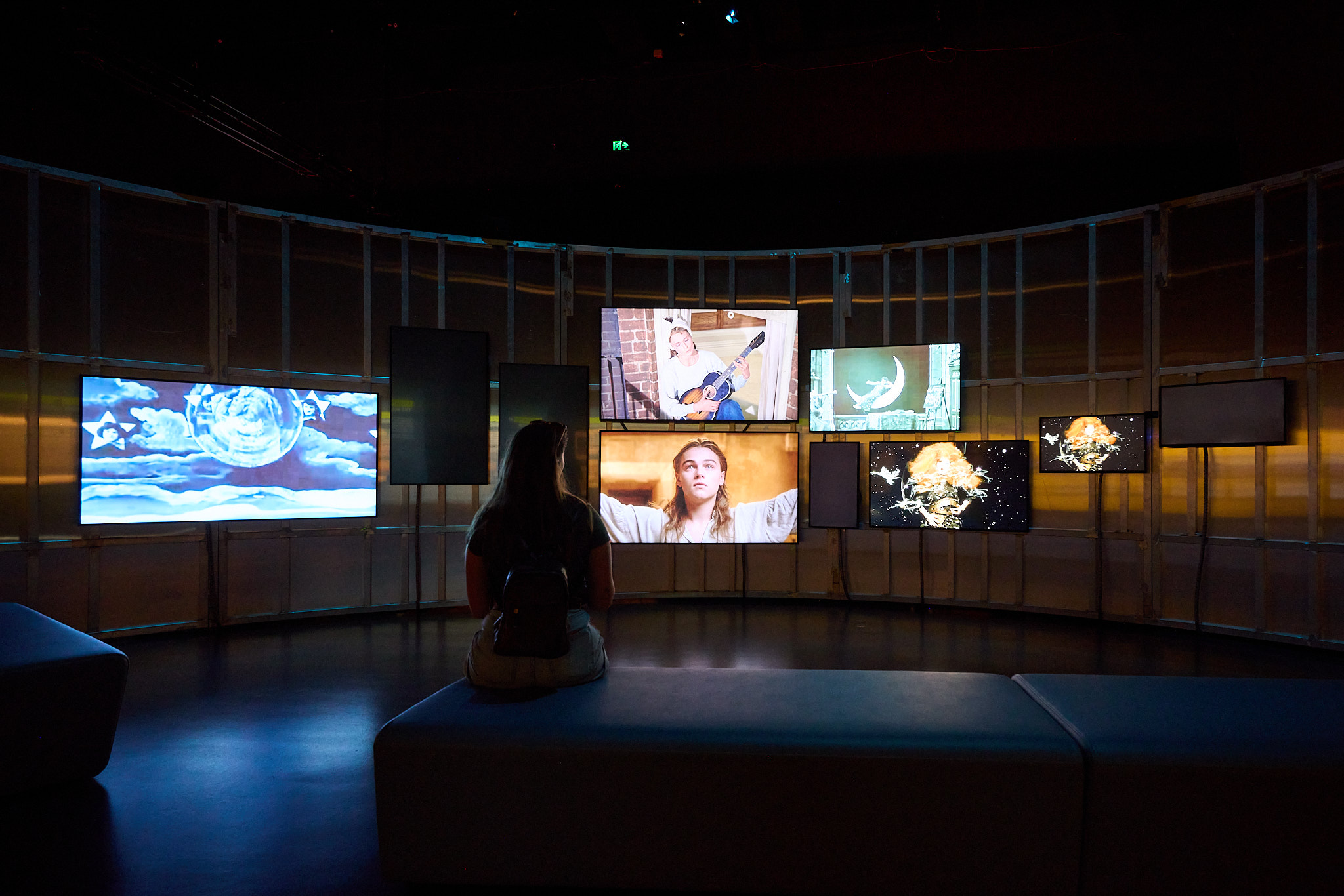
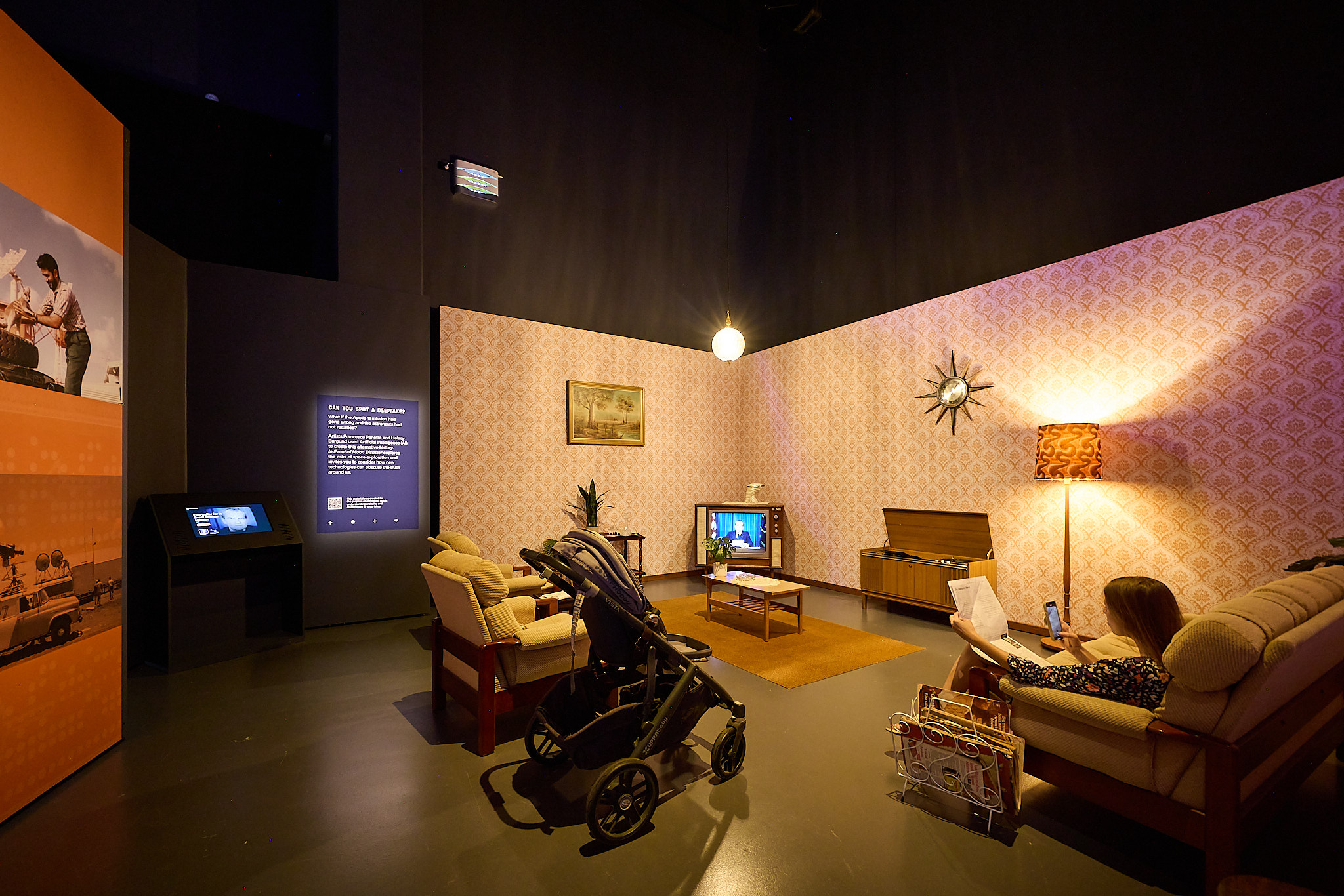
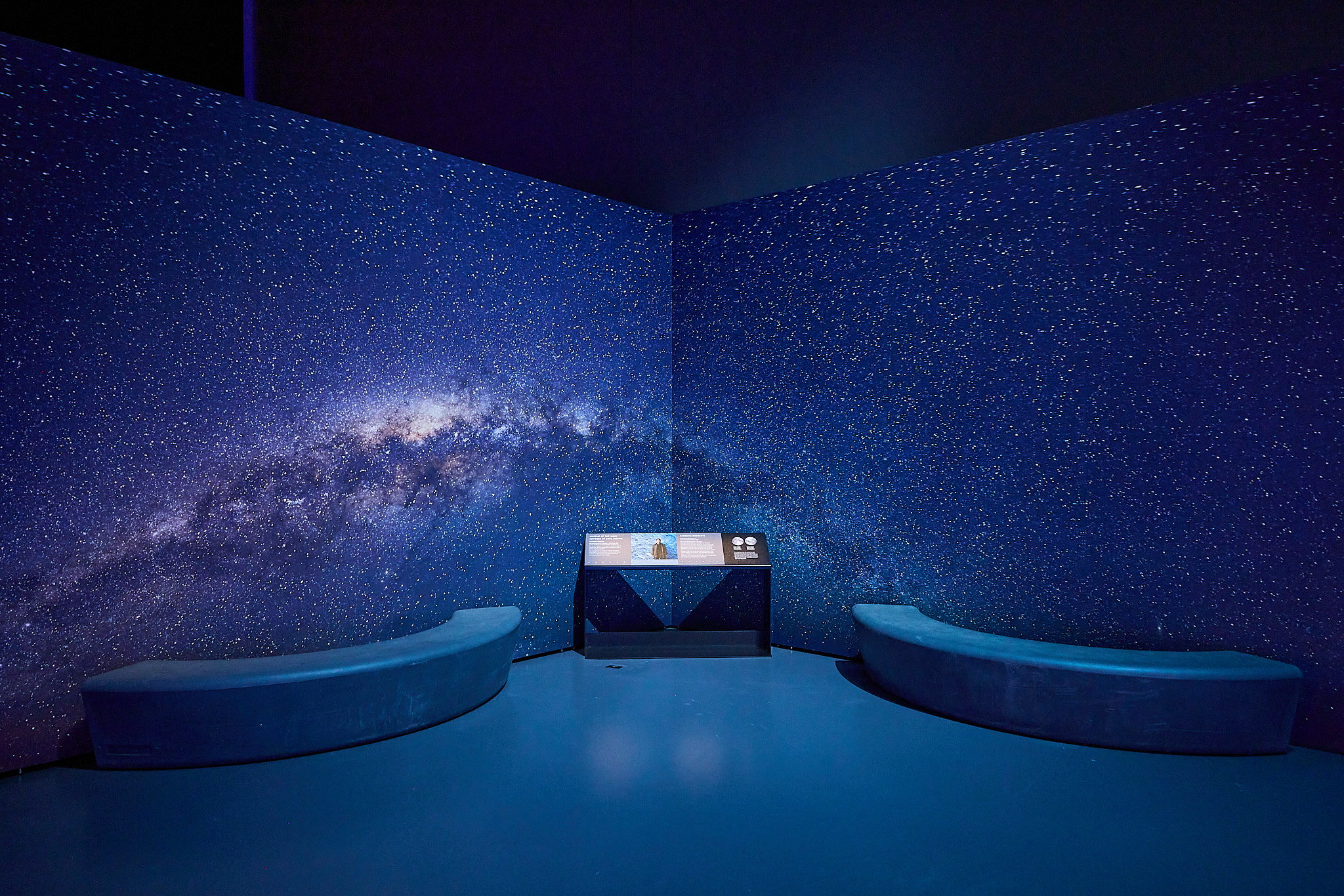
Interactive Displays
The interactive displays throughout the exhibition have varied engagement methods, but some have inaccessible handles and lack alternative interaction methods.
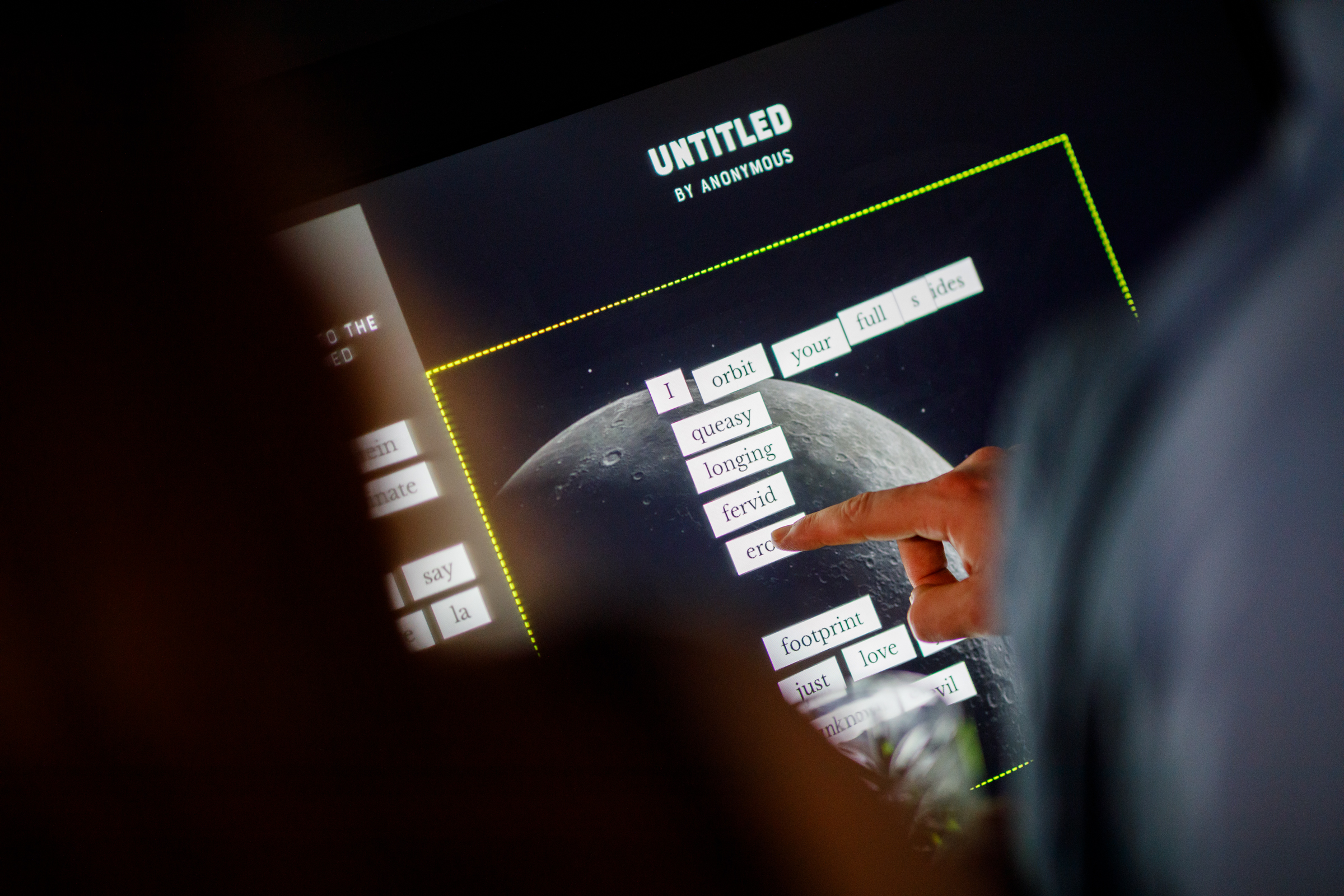
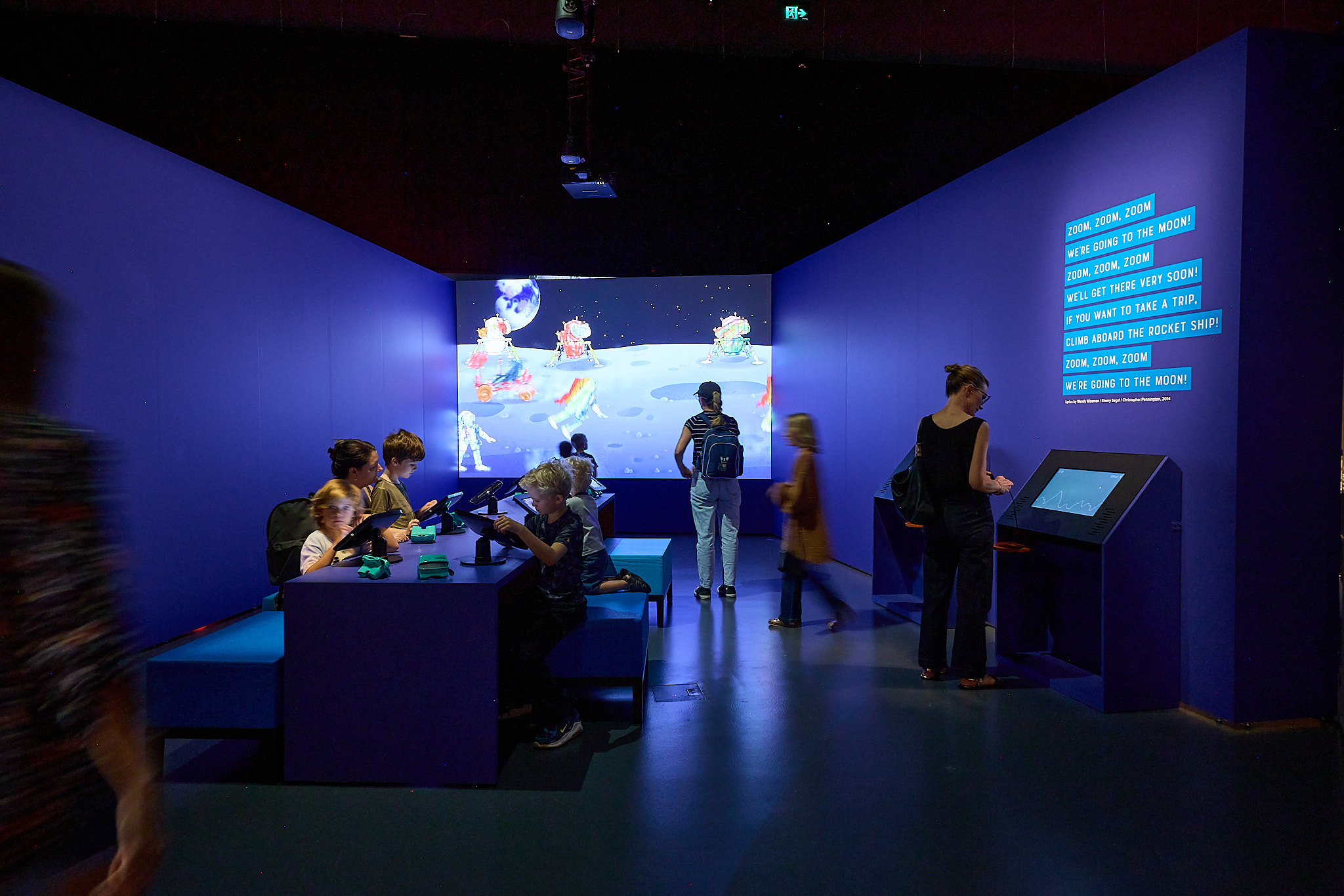
VR Experience
There are multiple programs to choose from within this experience, however, the complex controllers can be unsuitable for fine motor skills. Should this prove to be tricky to navigate our team is always available and on standby in the experience to guide you through it.
There is a separate quiet zone outside of the exhibition, with regulated lighting and less stimulating visuals so the VR Experience can be enjoyed in a more relaxed environment.
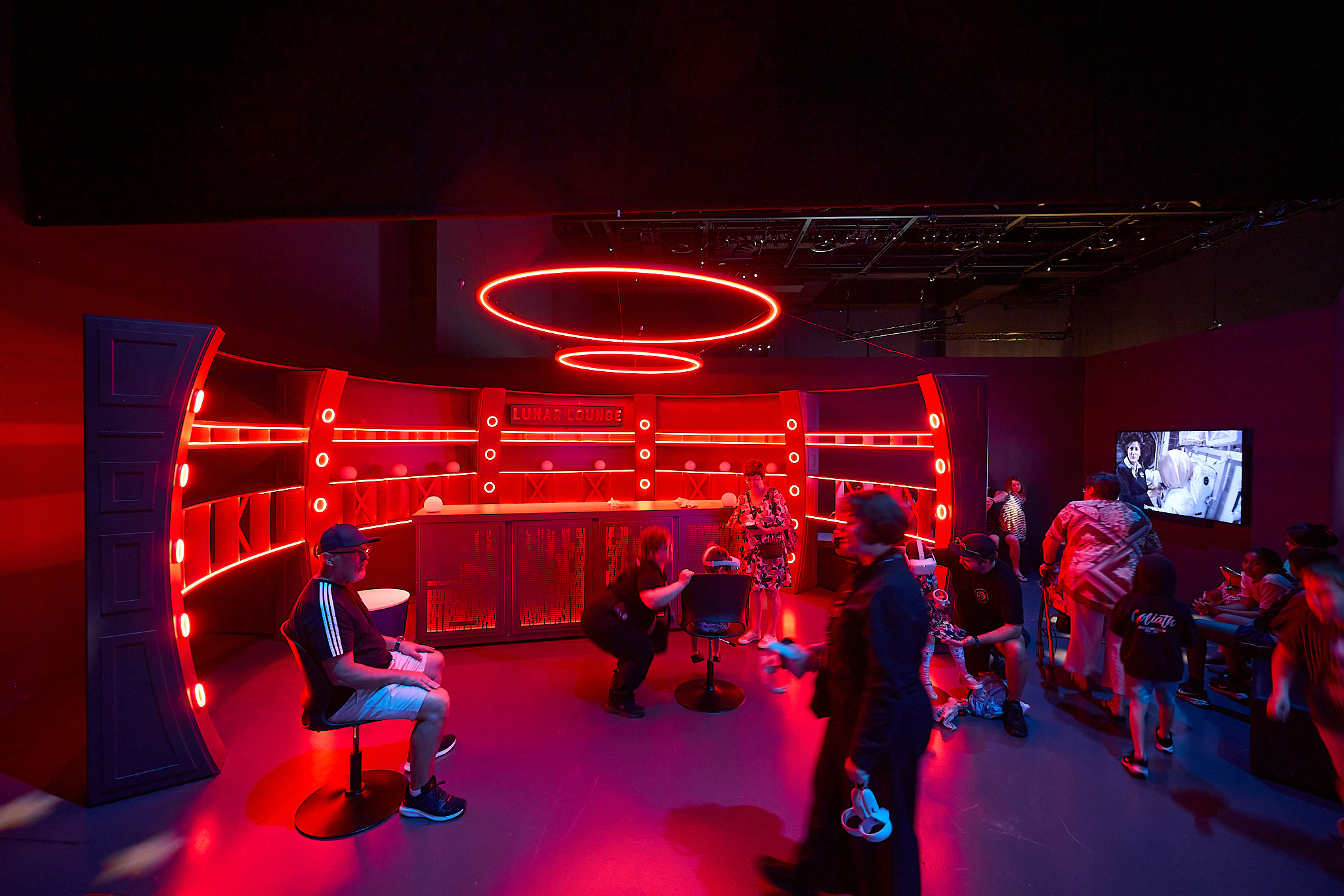
We hope you enjoy the adventure
To the Moon exhibition offers a compelling and enjoyable experience, with a balance between whimsy and scientific. It can be quite an emotional experience. However, there are still some areas to be mindful of, should you have any access requirements.
For further information, please contact reception@museum.wa.gov.au or call 1300 134 081.
The WA Museum has collaborated with the Centre for Accessibility Australia to develop the access information available.

|
